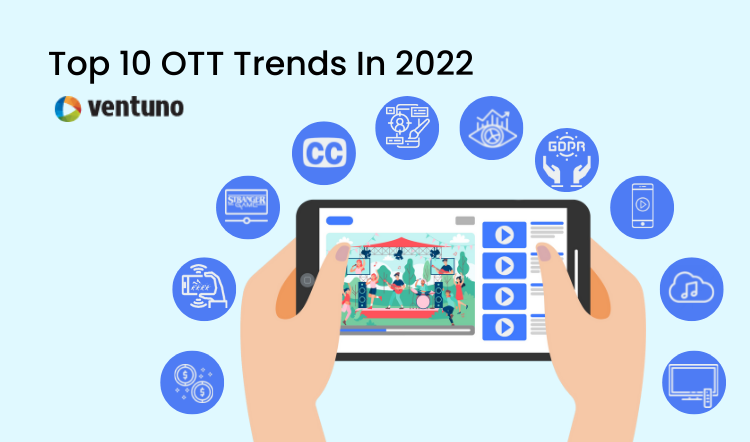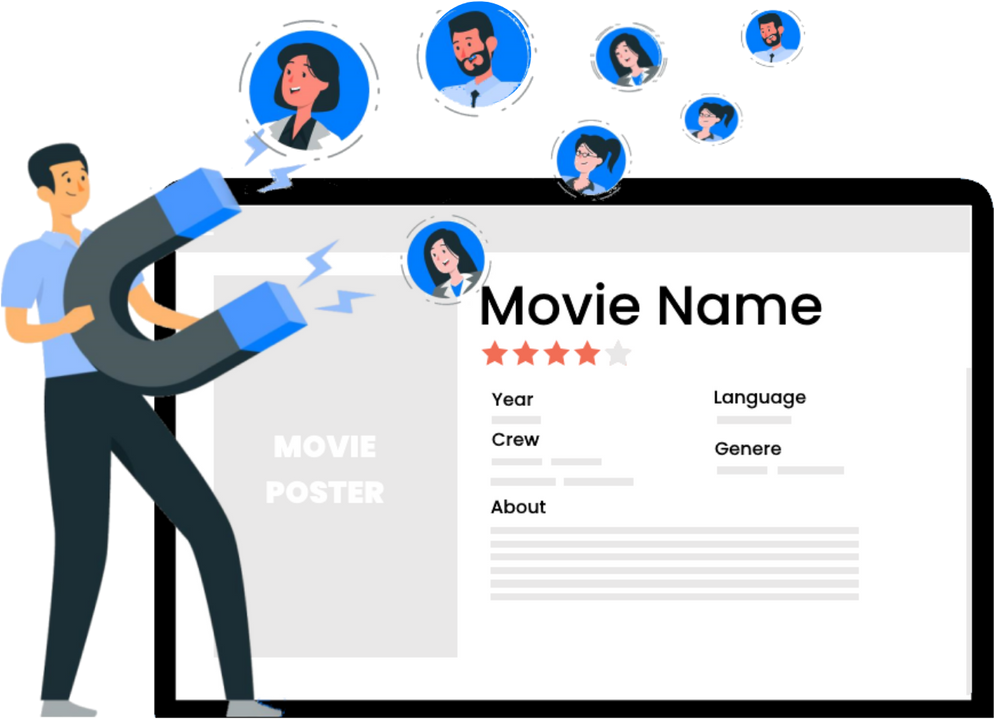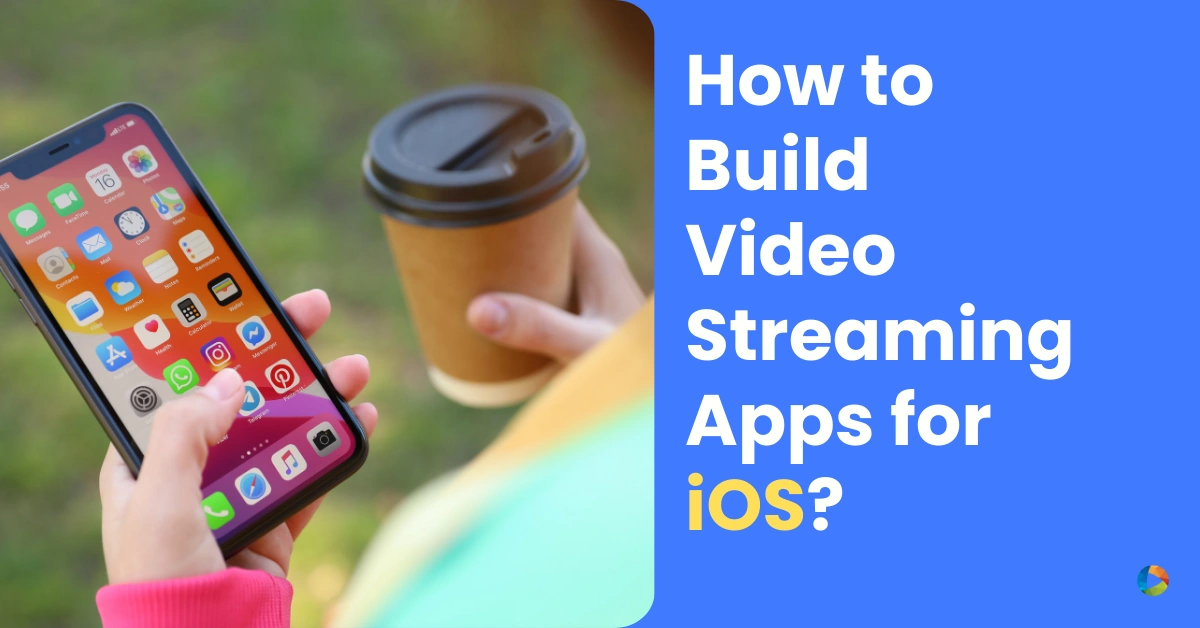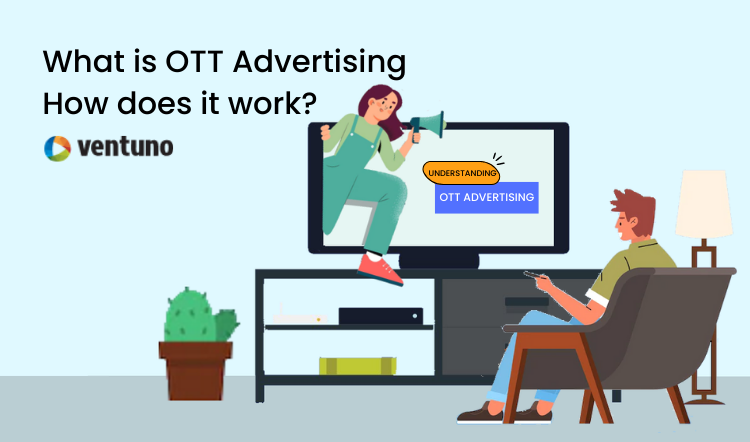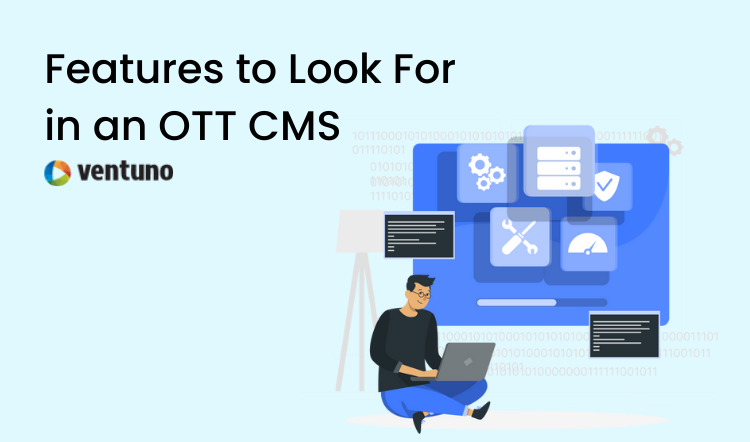Top 10 OTT Trends In 2022
Last Updated on December 30, 2022 by Anjana Devi
We have witnessed the rapid rise of OTT platforms and content over the past few years now. What started with Netflix now has major well-established brands such as Apple investing their resources in the OTT space. This space is still highly evolving and rapidly growing day by day.
Parallel cinema and creative artists who would usually not get support from major production houses can today put out content on OTT platforms and let the viewers directly decide whether the content put out is at par with viewers’ standards or not.
The international OTT streaming market is expected to grow from $129.67 billion in 2021 to $149.34 billion in 2022 at a compound annual growth rate (CAGR) of 15.2%. This is expected to double to almost USD 262.28 bn in the next five years.
While the growth indicators are quite optimistic, it is also important to know the trends that will emerge and dominate OTT streaming in 2022 and the following years. From being an on-demand platform for old classics to producing fresh and refreshing storylines, OTT platforms have evolved a lot.
Let us shed some light on ten OTT trends that we think will dominate video streaming this year.
In This Article
1. New approaches to monetizing OTT platforms

OTT platforms have been dependent on advertising, subscription and pay-per-view models to generate revenue to publish and produce content. Adding on to that, there are new emerging monetization trends that can help OTT space grow and evolve much faster.
Content segmentation:
Content segmentation helps in categorizing and classifying video content on OTT platforms. Mainly based on genre, content segmentation can also take place based on ratings and other classifications.
Content segmentation helps in boosting the reach of targeted ads and the job of advertisers becomes easy if the ads are targeted based on the interest of the viewers.
Segment content based on the type while having individual plans, the way Foxtel does – is a common OTT trend we’re observing.
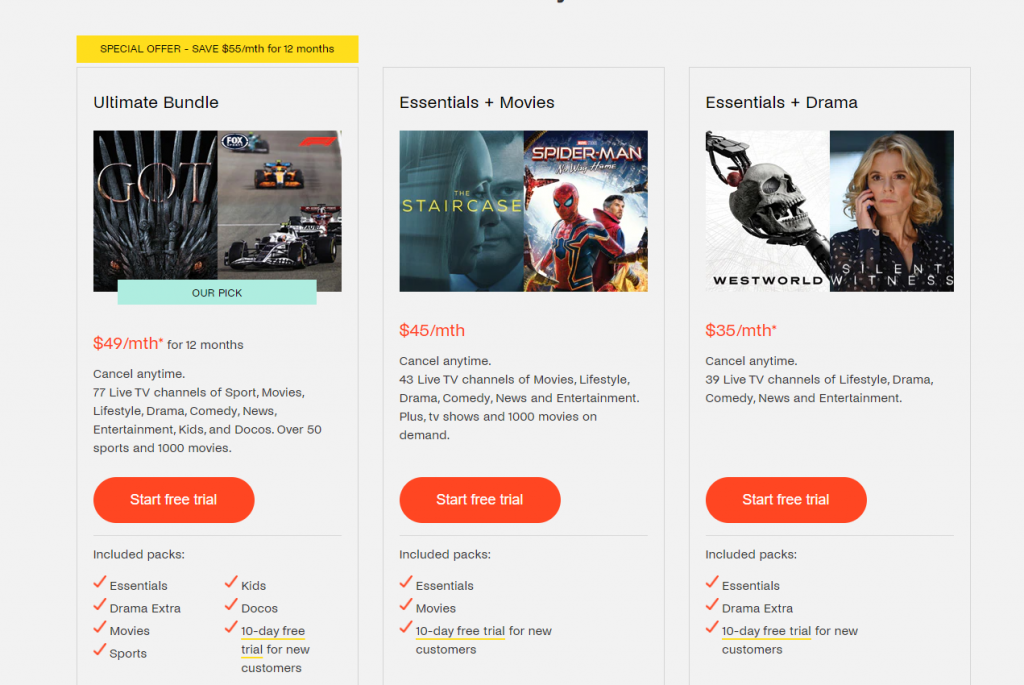
Hybrid monetization:
OTT platforms like Netflix are also exploring options having hybrid monetization plans wherein they leverage subscription fees as well as advertising revenue on their platform. Pay per-view model wherein users pay for particular content only is also another model of monetization for streaming services. A combination of ad-supported video-on-demand, subscription video-on-demand and transactional video-on-demand (AVOD, SVOD & TVOD respectively), seems to be the way forward for most OTT platforms as compared to earlier when it was mainly SVOD.
FAST channels:
Free Ad-Supported Streaming TV (FAST) Channels is live TV streaming for free, without a subscription. Monetization happens in FAST Channels through ads that are streamed during live tv. Users can enjoy streaming services without paying any subscription fees and OTT platforms can generate revenue through ads. Pluto, Peacock, Xumo, and Tubi are some globally big names in FAST Channels.
Mainly, there are two types of FAST channels, syndicated and branch channels.
Syndicated channels are thematic channels that focus on particular topics such as cooking or science fiction shows.
Brand channels are distributed by corporate and brands. These channels provide content that is related to specific products, services, or values of a particular brand or company.
Content bundling:
Content bundling is another great way to monetize content on OTT. It is a pay-per-view model which bundles up movies for a certain rate.
For example, let’s say you are renting out a movie for $2 and your users buy an average of 5 movies per month. They spend $10 and enjoy 5 movies on your platform. Alternatively, you can bundle 6 movies and rent them out for $11.
They get to watch each movie for $1.83 and you are earning the extra $1, which they would have not spent otherwise. Users are saving $0.2 per movie. More than that, with one additional movie, they will be spending more time on your platform than they were supposed to. This is a great strategy to use to increase viewership time on your platform and not your competitors.
2. Streaming wars will heat up

As the OTT space is growing at a very fast pace, more and more companies will emerge to fight for the top spot. With the likes of Amazon, Apple and other brands entering the OTT space and putting out original content, the competition to deliver an extraordinary user experience is increasing day by day.
User retention and engagement is the main differentiating factor here. OTT platforms need to monitor their data regularly and work towards analyzing and delivering what the people want.
OTT marketing strategies for user retention will also play an important role in this. Frequent but not overdoing push and email notifications will help them to build trust with the audience. Remind them about the latest upcoming seasons, and episodes of their favorite movies/shows.
3. More original content will be produced
It was reported that major players in the OTT space such as Apple TV+, HBO Max, Disney+, Peacock and Paramount+ invested $8 billion in producing original content in 2021 alone. One research by Harvard Business Review also suggests that original content increases user engagement and retention rate with a particular OTT platform. Since original content is exclusively owned by the specific OTT platforms, it only makes sense for these industry players to increase investment in original content.

The Morning Show on Apple TV+, Squid Games on Netflix, or a plethora of classic Disney movies on Disney+ are some of the many examples of good original content that has got users engaged and retained on these specific OTT platforms.
4. Content that knows no borders
One of the most interesting OTT trends we’re witnessing through the rise of OTT is that we are now able to watch and appreciate the content that is not produced in the language that the majority of the audiences understand. Money Heist, Squid Games, and Dark are some of the many international shows that have been acclaimed by viewers across the globe and could connect with English-speaking audiences.

Find why your videos should be subtitled
Local content:
Money Heist, Squid Games, and Dark are shows that were made in Spain, South Korea, and Germany respectively in the local language. Yet, the stories and characters of these shows were so relatable, that they reached a wider audience than initially anticipated. This indicates the audience no longer wants to watch content only from Hollywood. They are open to watching any content to which they can relate or get entertained.
Polls show that one in four Americans has watched Squid Games, while Spanish, Brazilian and French shows and movies produced for global audiences now take up a good amount of space on the Netflix site. The globalization of the media is no longer about Hollywood, but way beyond it. Digitization of content has made this a multipolar affair.
Subtitles and captions:
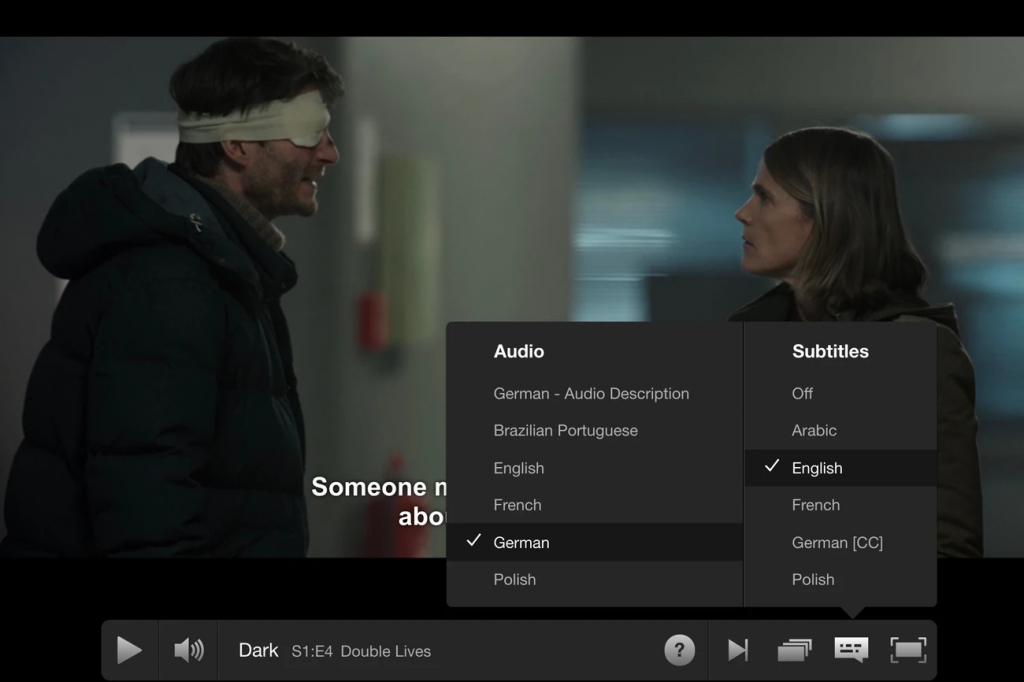
The language barrier of local content is broken through for English-only speaking audiences due to subtitles and captions. They play a vital role not only in translating dialogues but also in setting up context and making the audience understand the emotions and feelings in depth.
Subtitles are a translation of dialogues whereas captions are about elaborating sound effects taking place in a scene through words. Subtitles and captions in OTT have also been useful to connect with an audience who has hearing problems and therefore, make it watchable and relatable to an audience that usually wouldn’t be able to.
5. It’s all about the user experience

Adaptive streaming:
Whether you like to watch your video content on OTT in 720p or 1080p, you can choose as per your convenience. Most streaming platforms today provide the ability for audiences to choose the resolution in which they would like to consume and stream the content they desire to.
Ease of use:
OTT platforms are super user-friendly for users of all age groups. From registration and login to discover your favourite shows, all of it can be done in a few clicks. Most OTT platforms have classified their content in such a way that all genre and type of content is viewable on the first homepage itself. On Ventuno, you can easily add titles, tags and descriptions while uploading video content to make it easily searchable and discoverable for your viewers.
Content recommendations:
Based on previous watch and search history, machine learning models of OTT platforms can predict what kind of content you may like to watch and recommend content based on your specific interests. This helps to increase the reach of content that is of interest to the audience but not known by them. It also helps to understand viewer behaviour patterns and by leveraging metadata in OTT platforms, the content recommendations will increase the engagement and retention of users on the platform.
6. Analytics will guide content production

Analytics is one of the most important roles when it comes to content production and distribution, making it an important OTT trend for 2022. Which genre of shows/movies are people watching more, how long they are watching, where are they dropping off, and how many episodes do they watch in a day or week, all these datasets can help to improve content production.
Data is the new oil and OTT platforms are no exception. The creativity of content can be controlled by the production houses but analytics help producers and distributors give an idea as to what kind of genre or content is demanded by the audience.
7. Responsibly targeted advertisements
Ads generate revenue for streaming platforms and this OTT trend is only on a rise. There are different ways to place ads on the OTT platforms that do not interfere with the streaming experience for the viewers. Pre-roll, mid-roll, post-roll, and overlay are some common types of ad placements used by OTT platforms to place ads while streaming video content.
With GDPR compliance in place, GDPR consent management for brands has become vital. The audience’s permission is a must before they start receiving the targeted ads, else brands may be heavily penalized for processing users’ data.
8. Short videos are here to stay
Over the last few years, short-form vertical video content has gained quite momentum. TikTok pioneered this trend and Instagram and YouTube were quick to adapt to this in the form of Reels and Shorts respectively. As the attention span of the average user decreases, time spent on 15-30 second video formats has increased drastically, and therefore, this format of video content will co-exist with long-form video content.
OTT platforms can leverage this OTT trend of short-form video content to promote their latest long-form video content and increase traffic to their respective OTT platforms. This will help to sustain the growth of both, short-form as well as long-form content.
9. Music streaming will takeover videos

Music streaming services such as Spotify, and Apple Music have also witnessed rapid growth. What started as a way to stream music on-demand, these services have expanded and diversified themselves to provide long-form audio content in terms of podcasts and shows. As people commute to and from workplaces, consuming video content may not always be feasible. Music streaming services have emerged as an alternative trend to streaming, music, podcasts, and shows through the medium of audio – that cater to the passive listener.
Music streaming services will likely come at par with the video content. With high-speed internet becoming more affordable, users prefer to stream music rather than save it on their local drives, as used to happen earlier. Leverage this OTT trend while it is still in the nascent stage.
10. Larger screens (CTV) will get even bigger
As reported by Neilsen in 2020, the total hours spent on Connected TV devices was 81% year over year. Connected TV devices have seen massive growth over the years. Viewers prefer to stream video content on different devices based on their preference and therefore, connected tv plays a vital role in it.
Mobile, laptop, PC, and streaming devices are some of the many commonly preferred devices through which the audience wants to stream video content. The major advantage of connected TV devices is that you can start from where you left from another device. This saves you time to stream entire video content from scratch again and again as these devices are connected through user profiles.
Ventuno can create state-of-the-art video content apps that will enable your video content to be seamlessly viewed on multiple devices. With a user-friendly interface, video content apps can be created with zero to minimal technical coding knowledge and users can enjoy streaming their favourite shows and movies on devices they prefer to watch them on.
Final thoughts
We have talked about ten game-changing OTT trends that are already paving inroads in 2022. From original content to revenue monetization and device preference, we have deep-dived into why we think these trends could bring a paradigm shift in the OTT industry.
Ventuno allows you to create unique and ease-to-use video content apps that can provide the latest industry features of video content. Our platform enables enterprises to create whitelabel OTT platforms and therefore, you can build your brand using our technical expertise and serve the needs of your audience. If you wish to see how the Ventuno platform works in real-time, click here to schedule a demo and our experts will be happy to walk you through the entire process.
Looking to launch your streaming app?

